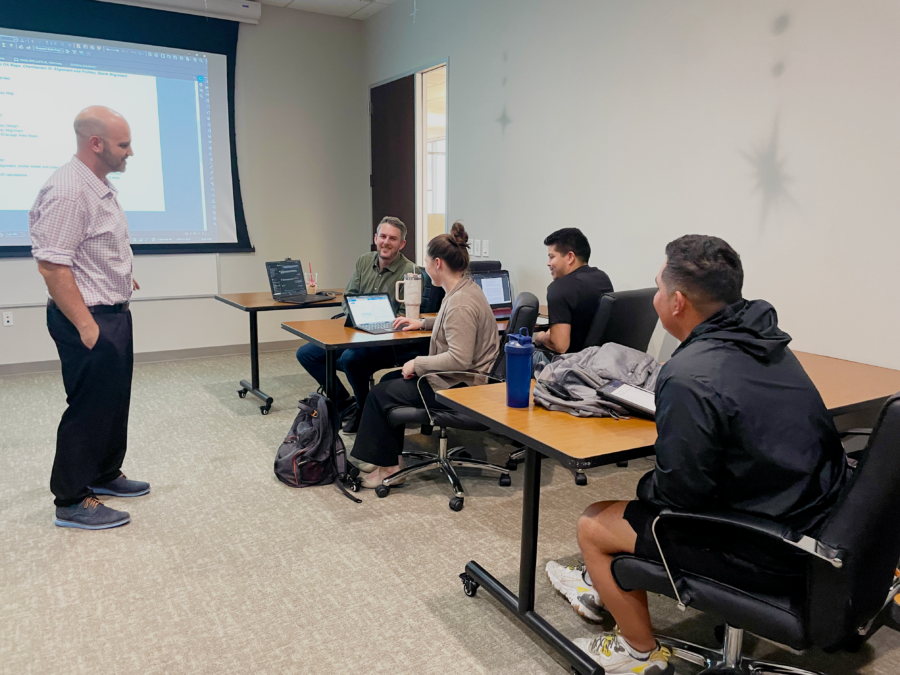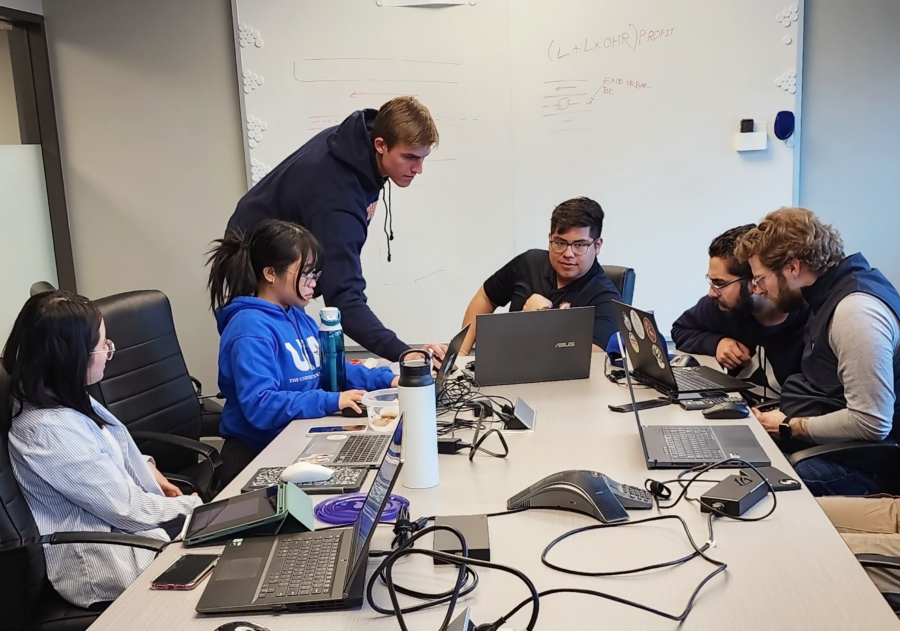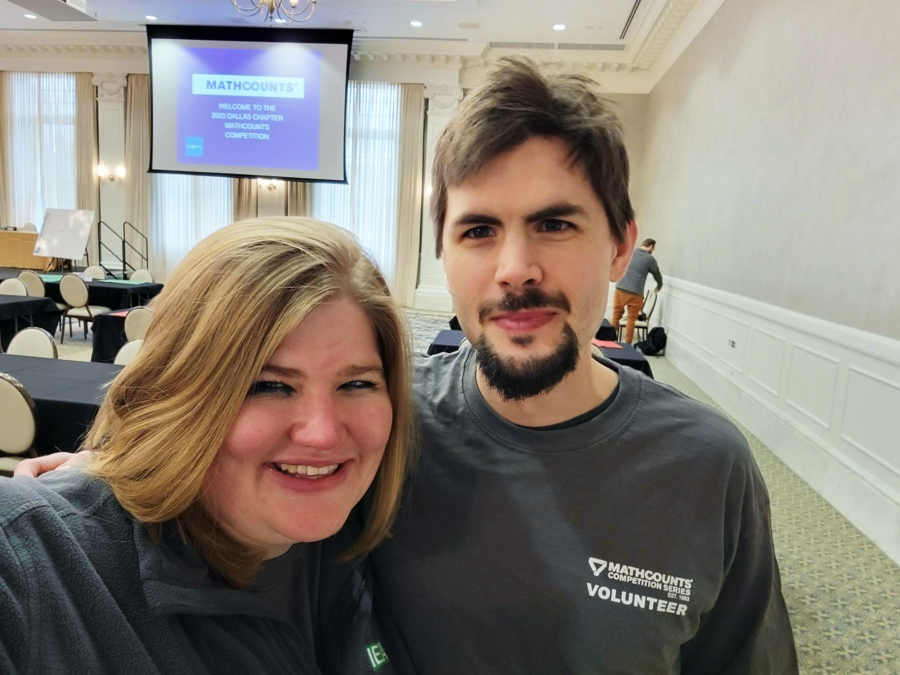IEA’s Working Towards a More Diverse Engineering Future
IT’S EWEEK 2024! AT IEA, WE ARE COMMITTED TO EXPANDING ENGINEERING EDUCATION AND CREATING INCLUSIVE STEM ENVIRONMENTS. WE’RE EXCITED TO SHARE STORIES FROM OUR TEAM ABOUT HOW THEY GOT TO ENGINEERING AND HOW THEY ARE HELPING TO SHAPE THE FUTURE.
Many stories that lead to an engineering career start with a love for discovery and a person who inspired them to follow that passion.
“My uncle is a civil engineer and owns his own company. Growing up, I looked up to him and valued his success,” said Nadine Khatib, IEA Dallas Graduate Engineer.
Since starting her journey at IEA, Khatib has been designing transportation projects and traffic control plans. On these projects, she has been growing in her knowledge of engineering software including Bentley’s OpenRoads Designer (ORD).
“The work I do makes an impact by developing roads which makes it safer and more efficient for our community,” said Khatib. “Looking at cross sections is cool because it feels like we are dissecting the road.”
Khatib is joined by other IEA Dallas staff who were inspired by family to get into civil engineering.
“My father was a civil engineer in my home country of Kenya where he worked in the aviation industry,” said Isaac Mwangi, PE, IEA Dallas Project Engineer. “Getting to visit with him on some road and airports projects when I was younger gave me the interest to become one.”
Mwangi now designs projects which widen and reconstruct major roads and highways; with the goal of improving mobility for motorists while increasing safety and providing efficiency for trade and commerce. He recently took on the role of Deputy Project Manager, where he will have the opportunity to collaborate with diverse teams of engineers at IEA and with subconsultant partners.
“I have always wanted to work on something with tangible output where the results are available for everyone to see as they make a positive impact to society and other stakeholders. Becoming a civil engineer working on infrastructure projects provides that opportunity,” said Mwangi.
Site visits, like Mwangi’s early visits with his dad, can be instrumental in sparking the imagination of K-12 students leading to an engineering career.
“I discovered I wanted to become a engineer after a High School field trip to the local City Engineering Office,” said Kyle Moynihan, PE, CFM, IEA Dallas Director. “During this visit, we got to meet with the City Planners, Traffic Team, and Engineers to see how they planned for the future, coordinated all the streetlights and developed new projects.”
Richard Pardo, PE, IEA Houston Structures Lead, discovered his love for bridges while visiting family in New Jersey and exploring New York City.
“When I first laid my eyes on the Brooklyn Bridge, I was astonished. I told myself I wanted to get into that line of work and design bridges of my own one day,” said Pardo.
The Brooklyn Bridge, like many other iconic structures, was an innovation at the time. It was the longest suspension bridge in the world in 1883 according to nyc.gov. The state of New York regularly maintains and updates this bridge for public safety.
Safety and stability are key to Pardo. He challenges himself to be responsible and focus on quality in his bridge designs.
“This helps to prevent accidents and collapses, protecting the public from harm,” said Pardo.
Quality is a key goal for IEA in 2024, and for Moynihan specifically. The forecasted work in Texas for the next several years promises a busy work life for the consultant engineering community.
“I will be focused on quality interactions with the Dallas team and quality deliverables to ensure a bright future with our clients,” said Moynihan. “I spend time with our IEA staff to walk them through the career paths and what responsibilities they will have at each level.”
Part of Moynihan’s quality time is spent with the newest round of the University of Texas at Arlington (UTA) students working on their Spring 2024 Senior Design projects with IEA staff.
“I help the senior college students understand what life is like in the industry, outside of what they have seen in the classroom,” said Moynihan.
IEA’s collaboration with UTA has fostered successful relationships between university students and the engineering industry. By integrating real-world, hands-on experience into senior design projects, students gain valuable insights into project processes.
“We basically became Project Managers for a part of the UTA senior design teams. We provide the personnel support, Project Manager, a Roadway Expert, and an H&H Expert. We try to set it up like a real-world project,” said Bryan Alldredge, PE, IEA’s Fort Worth Director.
In 2022, Bryan established IEA Aspire and led IEA’s first UTA senior design project in the Fort Worth Office.
“IEA in recent years has really committed to growing the next generation of young engineers with our Aspire program and our commitment to new graduates and reaching out to universities to engage with students and bring in that next level of engineering,” said Alldredge.
IEA Aspire, our summer internship program, offers engineering students an opportunity to work on real-world projects and collaborate with industry professionals. Students develop skills that may not be covered in school, such as exposure to industry-specific software like Microsoft ORD and project planning skills.
Alldredge emphasized the importance of having a comprehensive view of engineering projects, stating, “You can design a great project, but you also have to have a good set of plans. If you can’t convey your design to a contractor, then a great design becomes pointless.”
IEA recognizes how much involving students in STEM earlier than university can help ignite their passion for engineering. Khatib and Moynihan both called out math and science as subjects they did well at in K-12.
“Math was always my favorite subject, and I loved a challenge,” said Khatib.
Jennifer Nelson-Smith, IEA’s Marketing Director, recently began volunteering for MATHCOUNTS, a math competition for students in grades 6-8.
“I loved math growing up. It was actually my favorite subject, which is surprising to a lot of people who know me for marketing and writing,” said Nelson-Smith. “Last year when I was asked to volunteer for MATHCOUNTS, I was so excited. It gave me an opportunity to help at an event targeted towards kids who love math too.”
In 2023, Nelson-Smith and her husband both volunteered to be proctors. They were in a group of about 20 volunteers monitoring a large ballroom full of student teams through three rounds of competition.
“It was eerie how quiet that large SMU ballroom got during a round. Those students were incredibly focused on the tests,” said Nelson-Smith. “I’m excited to be going back again this year to see them in action again. I think it’s good for the students to see so many people volunteering to support this competition.”
While many of the IEA Team’s path led straight to engineering, some detoured through other majors and interests.
“My initial major in university was pre-med. I discovered that I wanted to be an engineer after working construction one summer. Building something tangible gave me a real sense of satisfaction,” said Reed Phillips, PE, IEA Director of Land Development.
After that summer, Phillips changed his major and his school to enter an Engineering Management program.
“Having worked overseas, I like to communicate the opportunities that engineering and technology degrees/careers afford. These degrees open doors, domestically and internationally, to be involved in some life changing projects,” said Phillips.
These IEA Team stories show there is more than one way to find yourself in the engineering field. By nurturing and supporting the interest in discovery and STEM subjects, we all can shape a brighter and more diverse future in engineering.




